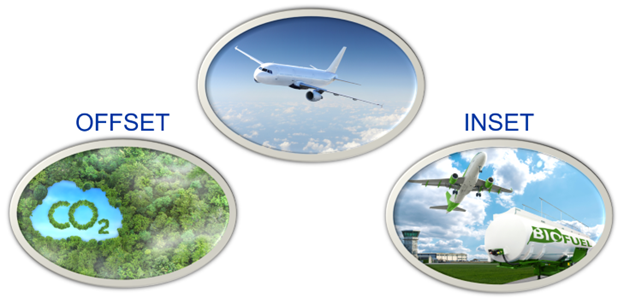Navigating Carbon Strategies: Understanding Offsets and Insets in Agriculture
Navigating Carbon Strategies: Understanding Offsets and Insets in Agriculture

As corporations worldwide intensify efforts to mitigate their carbon footprints, two primary strategies have emerged: carbon offsets and carbon insets. These approaches, while designed to address corporate emissions, have significant implications for the agricultural sector. Understanding the differences can aid farmers in determining the opportunities and risks associated with each approach.
Carbon offsets involve corporations investing in external projects that reduce or sequester carbon dioxide, which generates carbon credits (1 carbon credit = 1 metric ton of CO2 equivalent). These projects are often geographically and operationally removed from the corporations themselves. Therefore, they are projects outside of the direct supply chain of the corporation. In agriculture, these projects are often led and managed by project developers (e.g., Carbon by Indigo, Nori, and Agoro). These projects are typically long-term contractual obligations (avg. ten years) where farmers must adhere to the contract requirements for sequestering carbon and generating carbon credits. The carbon-sequestering activities (no-till or cover crops) must be additional, meaning these activities would only occur with the incentives provided by the carbon project developers. The carbon-sequestering activities are monitored, verified, and reported through a standard registry (e.g., Verra), where carbon credits are sold as carbon offsets. Carbon credits generated from agricultural practices and sold to companies outside the agricultural supply chain (e.g., Microsoft) are considered carbon offsets.
On the other hand, carbon insets focus on reducing emissions within the corporation's supply chain, encouraging more sustainable practices directly within the operations of their suppliers, including farmers. A company can source “sustainably produced” or “climate-smart” agricultural products and directly reduce their carbon footprint. By sourcing raw goods that have a lower carbon footprint, every company along the supply chain can benefit. This is unlike carbon offsets, where a generated carbon credit can only be owned or retired by one entity. Carbon insets are typically short-term (1-year) per-acre payments for agricultural products produced using sustainable or climate-smart practices. Carbon insetting may also be a premium, or less of a discount, for agricultural products produced using sustainable or climate-smart practices. For example, ADM is offering up to a $0.15/bushel premium for deforestation-free soybeans (more information can be found here).
Figure 1 uses an airline industry to illustrate the differences between a carbon offset and a carbon inset. Suppose an airline company has $200M to invest to reduce its environmental impact. The airline can invest that money in a carbon project that prevents a portion of the Amazon from being harvested. This prevention generates carbon credits that are outside of the direct supply chain of the airline company, hence a carbon offset. However, they can take the $200M and instead invest in sustainable aviation fuel. This is considered a carbon inset since sustainable aviation fuel is in the airline’s direct supply chain.
More companies are turning their strategy to carbon insetting to mitigate their carbon footprint. This is due to global concerns of companies making misleading claims to deceive customers of their environmentally sound products or services. This is called greenwashing and has been associated with carbon offsetting projects, which have led to lawsuits. In addition, you can get more bang for your buck with carbon insetting in agriculture since companies along the supply will benefit from sustainably produced agricultural products. Furthermore, leaders from various U.S. Federal Departments and offices released their joint policy statement and seven principles for responsible participation in voluntary carbon markets. One of the seven principles states: “Corporate buyers that use credits (“credit users”) should prioritize measurable emissions reductions within their own value chains” (i.e., carbon insetting).
As more companies change their strategy to carbon insetting, especially in the food, beverage, and energy sectors, there will be opportunities and risks facing farmers. Since Kentucky is the home of no-till production systems and many producers are implementing cover crops (both staple practices for sustainability and considered climate-smart), there will be ample opportunities in the state for producers to capitalize and benefit from the conservation practices they have implemented for years. However, these opportunities come with production, marketing, and legal risks. Stay tuned for an announcement for an upcoming webinar where we will provide resources to help educate farmers and ranchers on this new approach involving carbon insets and how it will impact your operation. Topics will include educating farmers and ranchers on the corporate claims impacting row crop and livestock operations, what qualifies as “climate-smart” practices, price transparency, market access, and contract/legal considerations. If interested, please register for the webinar that will be available for producers, stakeholders, county/regional ag agents, and extension specialists across the Southeast.
Figure 1. Example illustration from the airline industry of a carbon offset vs. carbon inset

Recommended Citation Format:
Shockley, J. "Navigating Carbon Strategies: Understanding Offsets and Insets in Agriculture." Economic and Policy Update (24):7, Department of Agricultural Economics, University of Kentucky, July 30, 2024.
Author(s) Contact Information:
